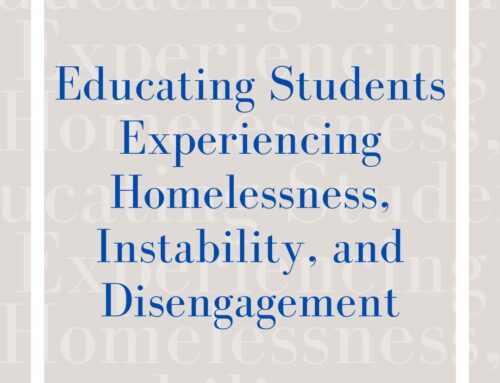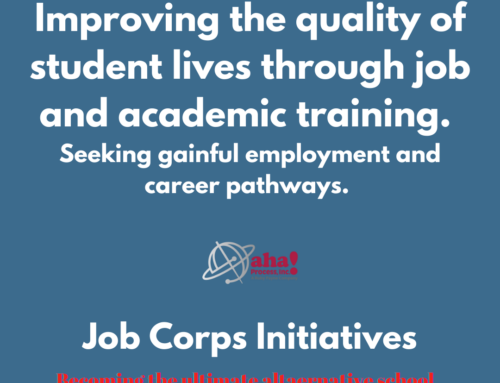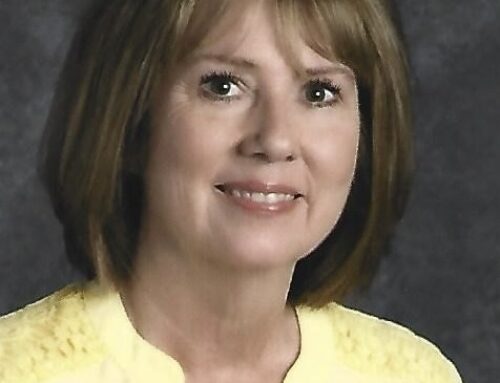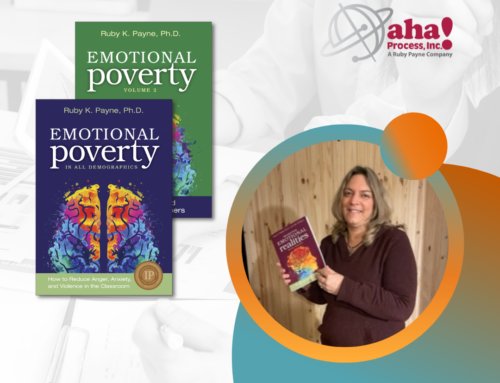Poverty exists in all countries around the world, but in the richest country on earth, why is there so little progress in breaking the cycle? Most people agree that education is the primary route out of poverty, but standardized test scores show too many students are failing in our schools.
Regardless of whether or not one agrees that standardized tests really show evidence of learning, I believe the vast majority of teachers in at-risk schools want their students to succeed. But what they are doing is not creating higher scores or real learning.
As a retired principal in a Title I school that achieved and maintained full accreditation, I found that there were two critical issues teachers of students from poverty face every day.
The first critical issue is lack of motivation: Students in at-risk schools are not buying what their middle class teachers are selling. As Dr. Ruby Payne’s book shows (A Framework for Understanding Poverty: A Cognitive Approach), life for those mired in poverty is very different from that of their middle class teachers (especially those who have only known life in middle class families, neighborhoods, and schools). Students from poverty don’t see school as a place where they can be successful. They don’t have parents pushing them to succeed so too many give up. And it isn’t that students from poverty are not motivated. In fact, they are very motivated to do what they want to do, but it’s not what they need to learn for success in the abstract world of the middle class.
So what teacher behaviors can improve student motivation? Creating a high expectations classroom. What motivates are teacher behaviors that send a constant message: “I think you can do it. I expect you to do it.” Back in the 1970s in the schools of Los Angeles County, California, they developed a teacher-training program called Teacher Expectations and Student Achievement (TESA) that focused on key teacher behaviors research showed were ineffective with low achievers. Over 30 years later Walsh & Sattes noted the same ineffective teacher behaviors in their 2005 book Quality Questioning: Research-Based Practice to Engage Every Learner. And since then, work by the Harvard Learning Protect and Wiggins and McTighe continue to show similar concerns. So we know what should be changed, but it’s not happening in far too many schools. The instructional focus needs to start with holding high expectations for every student. What do high expectations look like?
High Expectation #1: Equitable Distribution: Motivation starts with everyone alert and expecting to be called upon at any time. How much fun would it be to teach students: who want to be involved . . . who care if they get the answer right . . . who care what the teacher thinks about them . . . who have true grit for learning? There are many ways to ensure that everyone has an equal chance to be called upon (e.g., elementary teachers have a cup with popsicle sticks with names on them or don’t have students raise hands at all). The important thing is students know this will be done – it’s consistently expected each student will be ready. Sure it’s easier to call on those who always know the answer – but what happens to motivation (and discipline) of a student who knows the teacher will never call on her? Studies have consistently shown from 25 to 33% of students have no interactions in class at all. (Walsh & Sattes).
High Expectation #2: The teacher asks more higher order questions. Research shows student achievement rises when teachers expect and require students to apply, analyze, synthesize and evaluate, beyond remembering and recalling information. Yet teacher questions at the lowest level fall between 75% to as high as 94% of the 400 questions they ask every day. Why? Keep reading.
High Expectation #3: But what about the kids who really don’t know the answer? This is where corrective feedback is critical – It’s not enough to let him know he’s wrong and move on. Rather: delve – drill down – rephrase, repeat, give clues, give more time to perceived low achievers – don’t let him off the hook. If an answer is clearly wrong, say, “That’s interesting. What makes you say that?” Ask open questions that require thinking. “I don’t know.” is unacceptable. Research shows that making a mistake – and figuring out how to correct the mistake –is a powerful motivator.
High Expectation #4: Wait Time I and Wait Time II. Research has consistently shown that low achievers are less likely to be called upon at all; when called upon the wait time after a teacher question is less than a second. Often it’s actually even less than that! The teacher interrupts the student and moves on to a hand-raiser. Another reason low achievers are called upon less is that the teacher does not want to embarrass the child. That’s kind but what message does that send to the child? He thinks, “She thinks I’m dumb; that I can’t do it.” In fact, if a teacher’s focus in a discussion is “covering the material” or “keeping things moving so I don’t lose them”, research shows the average teacher asks 1 to 3 questions per minute – not much time for higher order thinking or wait time!
Wait time II is when a teacher responds to a student’s question. Strikingly, this is actually less than one second. So the child who needs more thinking time to process; who asks a question to clarify or offer an idea – soon learns not to risk embarrassment in front of her peers by appearing “dumb”. The primary cost is lost understanding and the secondary cost is lost motivation.
Something to consider: Have you ever had a teacher in your own life who sent the message (spoken or unspoken) that she didn’t think you could do the work? You can’t do this? So how hard were you willing to work for this teacher? Respect must be mutual to be effective.
So, if you are a teacher who has high expectations for your students – great! You get it and I’ll bet (although it’s a lot of work for you) that your students want to do what you ask and want your approval. And if you are a teacher who wants the best for your kids – but you realize you don’t always hold high expectations for them all – it’s never too late to do the right thing. Start small – build upon success. If you teach middle or high school, start with one class – model for them what wait time looks like and especially discuss why we all need time to think. If you’re in elementary school, start with the first period of the day – again, explain and model what you will be doing and why.
Resolve to start the new year with high expectations – connect with students who really need you – need good teaching – need people to believe in them. Students from poverty deserve the best teaching we can give them – ALL of them.
(Note – in Part II we will see how high expectations can be linked with teacher behaviors that teach responsibility and build relationships.)
Please click here to read the second entry of this two-part series.
Dave Burgess is a retired school principal with Henrico (VA) public schools, an educational consultant, and associate adjunct professor for the University of Richmond (UR). At UR he teaches two graduate courses: Teaching Students from Poverty (Ruby Payne’s book is central to this course), and Practical Strategies in Instruction and Discipline. Contact him at davidburgess789@gmail.com.








